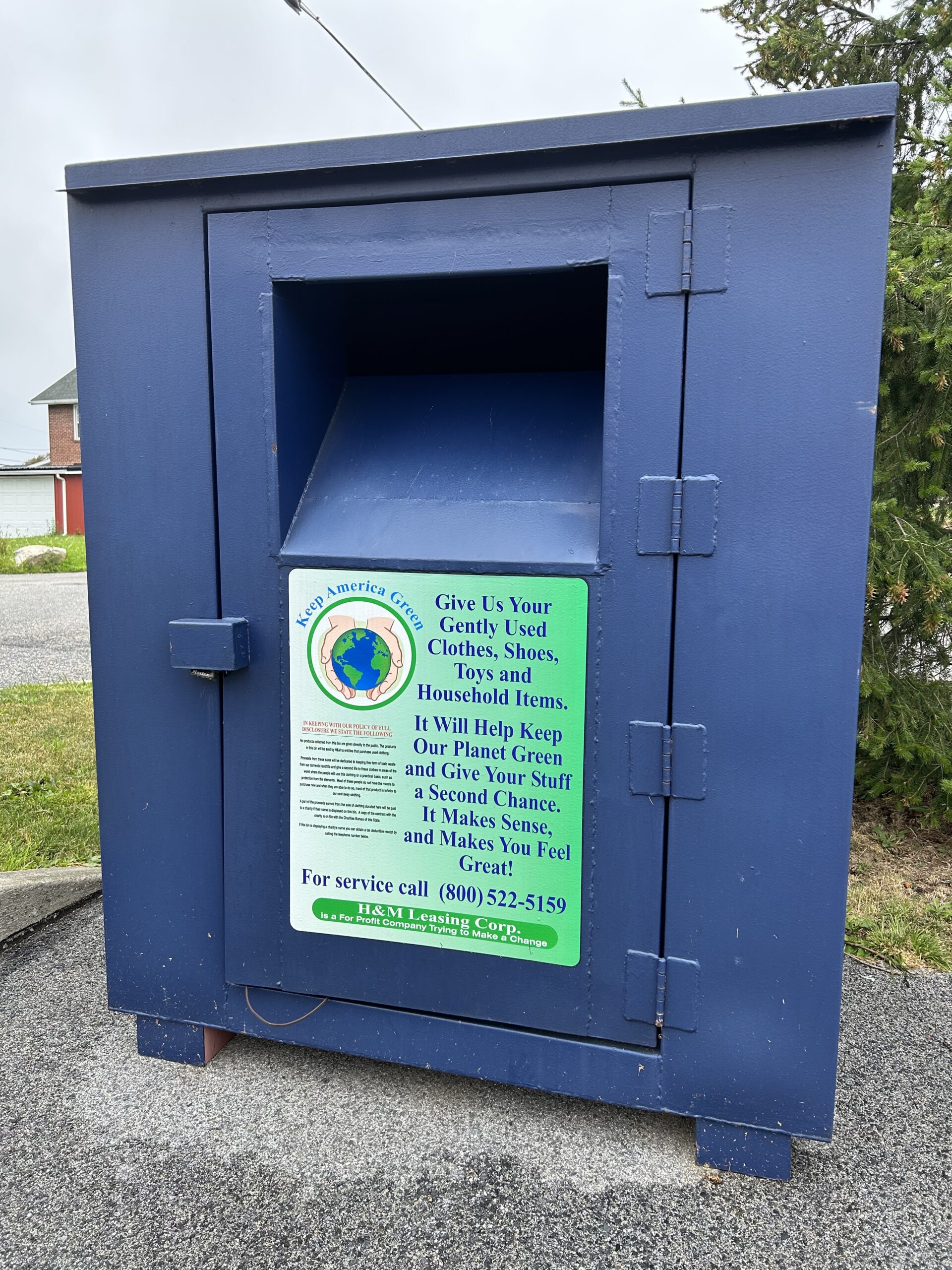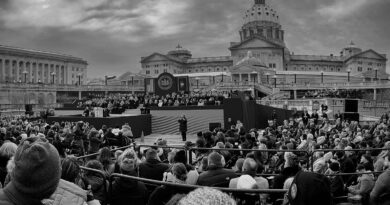Is what is old still new?
Yes. Thrift shopping and yard sales are still viable and affordable recycling options,
but technology is also helping people shop to help the planet.

By Amanda Kelly
Special to The Knightly News
amanda.kelly@mymail.centralpenn.edu
When was the last time you popped some tags when you had $20 in your pocket, like the once-popular rapper Macklemore, and decided to hit the thrift store for some new clothes?
Do you consider second-hand clothes just as old and outdated as an 8-track or cassette player, or are they mildly cool and still a little in style like Macklemore’s 2012 hit song “Thrift Shop”?
Are we, as a collective unit, looking for sustainable ways to save the planet, seeing a rise or a decrease in popularity among frugal ways to shop – or are yard sales and community charity stores holding on by a thread like rompers and matching tracksuits?
Thrift shopping is a passion

“I love thrifting for clothes,” Harrisburg native Heather Taylor said. “But over the past couple of years, I have seen prices go up on items that would typically be more affordable.”
This seems to be a trend across the Midstate, but is there a reason? Many assume it’s because thrift stores are trying to make up for sales lost during coronavirus shutdowns, but do local shops know this affects their customers?
“Donations are up,” local thrifter Katie, who asked that her last name not be used, said. “But we try to offset prices with half-price days and specials.”
Does this pricing increase affect how people view thrifting?
“I have a hard time buying something for almost its retail price when I know it was given for nothing,” Arissa Ward, a mom from York, said. “So, I tend to stray away from them in favor of local free communities on Facebook, where people can post items that they are either looking for or gifting.”
While some may have the resources to reuse, reduce and recycle what they have, others find themselves at the mercy of the population of a throwaway planet.
“Because local prices have gone up, I have found myself buying cheaper items off of sites like Temu and Shein, which allows me to throw away or donate them when their run has ended,” local thrift queen Cyndi Taylor said. “I still try to visit Community Aid every week, but these sites make it easier to provide without worrying about thrift stores not being thrifty anymore. Although I do prefer thrifting for kids’ toys and craft items.”
When asked what days she prefers to shop, Taylor said. “I like Tuesdays for Senior Day, because Family Day, on Wednesday, gets a little busy.”
It is also notable that Thursdays are School Days, on which teachers and students get 50 percent off all items, with their valid school ID, and most thrift stores do a $1-day once a month, usually on Saturdays.

Other budget-wise sustainable shopping
What are some other ways to stay sustainable on a budget?
Ward, who runs a busy homestead around her four children, said it’s all about taking one step at a time.
“I started out with simple switches, like cloth wipes instead of paper towels,” which she knew would make a small difference to the planet but a significant difference in her own life.
“Each switch made it easier to continue the journey,” Ward stated.
Now, she can be found trying to wrangle her youngest child, Rory, for a cloth-diaper change while she chases after their flock of chickens.
While making soaps and baking bread may not be in the cards for everyone, especially busy college students, it is a good point about the planet and how we can better take care of it. With prices at thrift stores increasing, we can either turn to the easy solution of less-expensive, less environmentally friendly goods from overseas, or make smaller, more attainable switches in our everyday lives to offset those costs.
But are these swaps beneficial to just the planet or to us, too? Aside from the savings in the budget, Ward said she’s also seen a difference in her health. Healthier skin, softer clothes and more quality time with family are all benefits from these more sustainable switches.
The great news is, if you’re looking for the thrill of a good bargain, this pastime won’t be going anywhere soon. With over 25,000 second-hand stores across the nation, thrifting doesn’t seem to be at risk of falling off the charts like Macklemore’s “Thrift Store” did so many years ago.
Kelly wrote this article for a journalism class in which she is enrolled this term that Professor Michael Lear-Olimpi is teaching.
Question or story idea? Contact KnightlyEditors@CentralPenn.Edu.
Edited by media-club co-adviser and Knightly News blog editor Professor Michael Lear-Olimpi.



